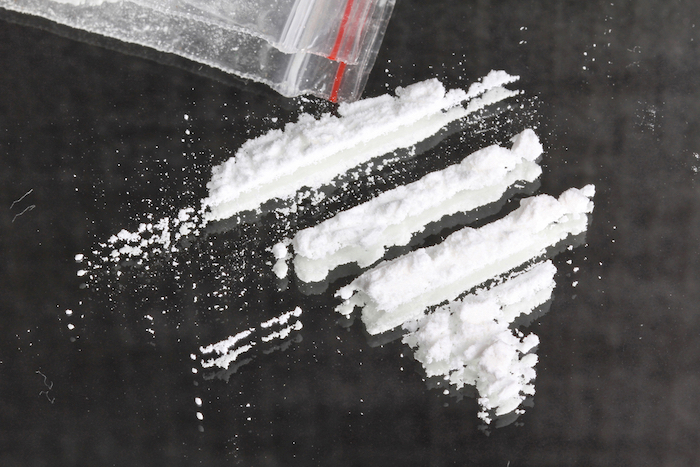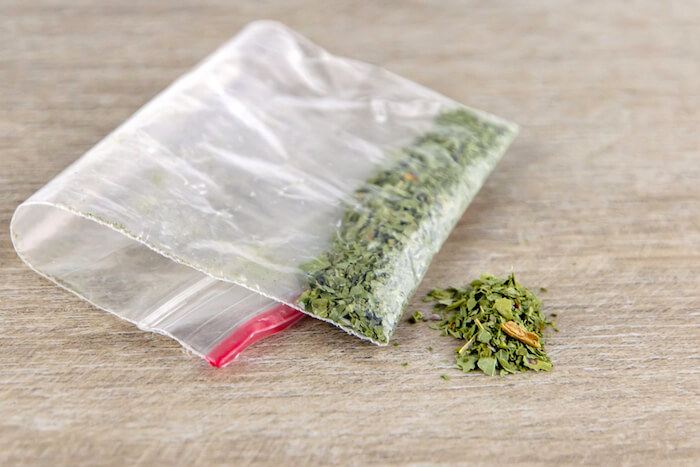In recent years, a new and dangerous synthetic drug known as monkey dust has been making headlines in the UK. This mysterious substance, which typically comes in a white or off-white powder and looks similar to cocaine, has garnered attention due to its unpredictable effects and potential for addiction.
In this blog post, we will explain what monkey dust is, its origins, its effects on the human body and mind and whether or not it is truly addictive. We will also discuss the dangers associated with this drug and addiction treatment options for those who are struggling with monkey dust abuse.
What Is Monkey Dust?
Monkey dust, also known by its chemical name MDPV (Methylenedioxypyrovalerone), is a synthetic cathinone, a class of drugs that are chemically similar to amphetamines. It is categorised as a stimulant, and its chemical structure bears resemblance to other synthetic drugs like bath salts and flakka. Monkey dust has gained notoriety for its powerful and unpredictable effects on users.
Monkey dust first appeared on the illicit drug market in the mid-2000s. It was initially developed as a research chemical by pharmaceutical companies, but its recreational use quickly became prevalent due to its stimulating properties. This synthetic drug was initially sold as a legal high or a designer drug, often labelled as “bath salts” or “plant food” to evade legal restrictions.
The Effects of Monkey Dust
The effects of monkey dust are highly potent and can vary significantly from person to person. Some of the common effects reported by users include:
- Intense euphoria — Monkey dust can induce feelings of extreme happiness and euphoria, which may be why some individuals are initially drawn to it.
- Increased alertness — Like other stimulants, monkey dust can enhance alertness and concentration, leading some users to believe it can improve their productivity.
- Heightened agitation — On the flip side, monkey dust can also cause severe anxiety, paranoia and agitation. Users may become extremely irritable and aggressive, leading to unpredictable and often dangerous behaviour.
- Hallucinations —Some users have reported hallucinations, both auditory and visual, which can be distressing and contribute to the drug’s unpredictable nature.
- Risk of overdose — Due to its potency and unpredictability, users are at a high risk of overdosing on monkey dust, which can be fatal.
Withdrawal Symptoms of Monkey Dust
Monkey dust withdrawal symptoms tend to begin within one to three days after stopping the use of monkey dust once it has cleared from the system.
Physical withdrawal symptoms include:
- Fatigue
- Insomnia
- Lack of appetite
- Nausea
- Tremors or shaking
- Sweating
- Headaches
- Heart palpitations
- Muscle tension and joint pain
- Vivid and unpleasant dreams or nightmares.
Psychological withdrawal symptoms include:
- Anxiety and agitation
- Depression
- Suicidal thoughts
- Paranoia
- Mood swings
- Intense drug cravings.
Following the last use of monkey dust, withdrawal symptoms tend to peak within the first week and improve after 7 to 10 days, but PAWS (post-acute withdrawal syndrome) can persist for weeks or months. Seeking a medically assisted detox to ease the withdrawal symptoms is advised.
Understanding Medically Assisted Detox
Detoxification, or detox, is often the first step in the journey of recovery from substance addiction. Medically assisted detox is a supervised process by which individuals with substance addiction receive medical care and support to manage withdrawal symptoms and safely eliminate the drug from their bodies. It is particularly valuable for substances like monkey dust, which can lead to severe withdrawal symptoms and unpredictable side effects.
The Benefits of Medically Assisted Detox in Residential Rehab
Medically assisted detox in a residential rehab setting offers a safe, comprehensive, and highly individualised approach to overcoming addiction, especially for substances like monkey dust. The benefits of rehab extend beyond the physical detoxification process, addressing the psychological and emotional aspects of addiction and providing a strong foundation for sustained recovery.
Key benefits of undergoing a medically assisted detox while in residential rehab include:
- Safety and monitoring — The safety of individuals undergoing detox is a top priority in residential rehab programs. Highly trained medical professionals closely monitor the detox process, ensuring that any complications or severe withdrawal symptoms are addressed promptly. In the case of monkey dust, which can lead to intense agitation, paranoia and hallucinations during withdrawal, this supervision is critical to prevent self-harm or dangerous behaviour.
- Customised treatment — Medically assisted detox in residential rehab is not a one-size-fits-all approach. Medical staff can tailor the detox process to the individual’s specific needs, considering factors such as the severity of addiction, co-occurring medical conditions and psychological state. This personalised approach maximises the effectiveness of the detoxification process.
- Pharmacological support — For substances like monkey dust, which can lead to intense cravings and severe psychological withdrawal symptoms, medications may be used as part of the detox process.
These medications can help reduce cravings, manage anxiety and depression and alleviate physical discomfort, making the withdrawal process more manageable and less daunting.
- Psychological support — Detox in a residential rehab setting goes beyond the physical aspects of withdrawal. It also includes psychological support through counselling and therapy.
Individuals receive various types of counselling and therapy to address the root causes of their addiction, develop coping strategies and begin the process of healing their minds and emotions.
- Seamless transition to addiction treatment — Residential rehab programs typically offer a continuum of care. After completing the detox phase, individuals can seamlessly transition into the therapeutic phase of treatment without the need to change facilities or treatment teams. This continuity of care significantly reduces the potential for relapse.
- Reduced risk of relapse — Medically assisted detox in residential rehab provides a controlled and drug-free environment, reducing the temptation to relapse during the vulnerable early stages of recovery. This can be particularly important for substances like monkey dust, where the risk of relapse can lead to dangerous consequences.
- Comprehensive approach — Residential rehab facilities often incorporate holistic treatments and alternative therapies alongside detox. These therapies, such as yoga, meditation, art therapy and nutritional counselling, promote physical, mental and emotional healing, enhancing the overall effectiveness of treatment.
The Dangers of Monkey Dust
The dangers associated with monkey dust are numerous and include:
- Health risks — Monkey Dust can lead to severe physical health problems, including heart attacks, seizures and kidney failure. Its stimulant properties can put immense strain on the cardiovascular system, leading to potentially life-threatening complications.
- Mental health implications — The drug’s tendency to induce paranoia, hallucinations and agitation can have long-lasting psychological effects on users. These mental health issues can persist even after quitting the drug. When under the influence of monkey dust, users may engage in erratic and sometimes violent behaviour, posing a threat to themselves and others.
- Legal Consequences — Monkey dust is a Class B drug, and possessing even a small amount of monkey dust can lead to criminal penalties. Under the UK’s Psychoactive Substances Act, penalties start with fines for minor possession, but if caught supplying monkey dust, an individual faces up to five years in prison.
Is Monkey Dust Addictive?
The question of whether Monkey Dust is addictive is a complex one. While the drug itself does not lead to physical addiction caused by drugs such as oxycontin, withdrawal symptoms may also drive users to take monkey dust again to avoid them.
Many users become drawn to the intense euphoria and increased alertness that monkey dust provides. However, the euphoric effects are short-lived, leading to a cycle of use as individuals seek to replicate the initial high. This pattern of repeated use can lead to psychological addiction, where users feel compelled to use the drug despite knowing the associated risks.
Additionally, the unpredictable effects of monkey dust, such as paranoia and hallucinations, can make quitting the drug challenging. Users may find themselves trapped in a cycle of use and withdrawal, further reinforcing addictive behaviour.
Addiction Treatment Options for Monkey Dust
Monkey dust is a synthetic drug with dangerous and unpredictable effects on the human body and mind, with a high potential for psychological addiction. When it comes to treating addiction to substances like monkey dust, choosing the right treatment approach is critical to achieving lasting recovery.
Below, we discuss various types of addiction treatment for individuals struggling with monkey dust addiction.
Outpatient Addiction Treatment
Outpatient treatment allows individuals to continue with their daily responsibilities, such as work or school, while attending therapy sessions. During outpatient addiction treatment, the below support could be offered.
- Individual counselling — Outpatient treatment typically involves one-on-one counselling sessions with a therapist or counsellor. These sessions provide individuals with the opportunity to explore the underlying causes of their addiction, develop coping skills and set goals for recovery.
- Group therapy — Group therapy sessions bring together individuals who are facing similar challenges. They provide a sense of community and support as participants share their experiences, learn from each other and build a network of sober peers.
- Medication-assisted treatment (MAT) — In some cases, outpatient programs may include MAT, where medications are prescribed to help reduce cravings and manage withdrawal symptoms. This approach is particularly relevant for individuals addicted to substances like monkey dust.
Residential Rehab — Inpatient Addiction Treatment
Residential rehab is a more intensive treatment option and will typically last between 28 days and six weeks, although it can be longer if required. When it comes to addiction to substances like monkey dust, residential rehab has several distinct advantages, including:
- Safe and controlled environment — Monkey dust is known for its unpredictable and dangerous effects. In a residential rehab setting, individuals are removed from the temptation of using the drug and are in an environment where they can be closely monitored, reducing the risk of self-harm and other health complications.
- Intensive therapy — Monkey dust addiction often requires intensive therapy to address its unique challenges. Inpatient programs offer more intensive therapy, including individual counselling, group therapy and holistic treatments like art therapy, yoga and meditation. These therapies address addiction from multiple angles, fostering a comprehensive healing process.
- Medical care — Individuals in residential rehab have access to medical care around the clock, which is especially important for those with severe addiction issues or co-occurring medical conditions.
- Isolation from triggers — Residential rehab removes individuals from their usual environments and triggers associated with drug use. This isolation provides a safe and controlled space for healing.
- Structured routine — The highly structured daily routine in residential rehab helps individuals establish healthy habits and break the cycle of addiction. This routine includes therapy sessions, physical activity, nutritious meals and sleep hygiene.
- Peer support — Living in close quarters with others who are on the same path to recovery can be a powerful source of motivation and support. The sense of camaraderie in residential rehab can help individuals stay committed to their recovery goals.
- Reduced relapse risk — By eliminating access to monkey dust and minimising triggers, residential rehab significantly reduces the risk of relapse during treatment.
Addiction treatment is not one-size-fits-all, and the choice between residential rehab and outpatient treatment depends on individual circumstances and needs. It is important to consider various factors, such as the home situation and the support system someone will have during early recovery. However, when it comes to monkey dust addiction, the unpredictable nature of the drug and its severe health risks make residential rehab a compelling option.
Step by Step Recovery offers confidential assistance with addiction treatment and prompt admission to our residential rehab facility in Essex. For free guidance, please contact us by filling out our online form or calling helpline at 0800 170 1222. We are ready to listen without judgment.




